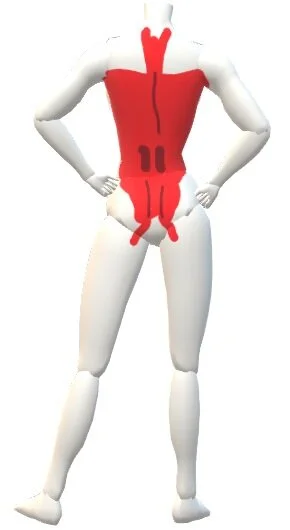Week 1: Arch and Flatten
Standing Awareness and Lower Belly Breathing
Awareness of posture
When we start to observe ourselves in somatic exercises, we become more aware of any postural issues. We try to build awareness so that we can sense our muscle tension, posture and movement. This is important as we want to start notice our posture before and after the practice and feel the difference. Ideally we practice with our eyes closed, undistracted by the external world and fully tuned into what we feel in our bodies; we develop our interoception. Building internal sensory-motor awareness of the body is an essential part of the Clinical Somatics learning process. Having finely tuned sensory-motor awareness will help you to correct your posture and movement as you move through your daily life, as well as prevent injuries.
You might have difficulty internally sensing your body when you first begin practicing Clinical Somatics exercises. This is perfectly normal, and it is usually a sign that you are a little out of touch with your body. Be patient with yourself, you might just need some extra time practicing, if you still struggle you can reach out to me for extra guidance.
Standing Awareness
We start each practice with Standing Awareness; this practice will allow you to feel your posture. You can listen to the video or audio and just notice what you feel, with your eyes closed. It will sound like:
“Stand normally, relax as much as possible, and don't try to have perfect posture. Let your arms hang by your sides, and close your eyes. Do a very slow internal scan of your body, focusing completely on your internal sensations. Start with your feet, and spend at least 5-10 seconds noticing how each part of your body feels as your scan moves upward, ending with your neck and head. Take as long as you want to do this body scan and do not rush it. Take the time to articulate to yourself what you are feeling; for example, “My weight is more on my right foot than my left” or “I feel like my left shoulder is higher than my right.”
Audio:
Lower Belly Breathing
After the standing awareness we want to connect to our breathing. You can again listen to the audio or video to guide you through the practice.
good for
Shallow breathing
Stress
High blood pressure
Muscle tension
anatomy
Diaphragm
Intercostal muscles
Arch and Flatten
The Arch movement helps to release the extensor muscles of the back, so this is great for people who have tightness in their back. The Flatten movement uses the abdominal muscles to press the lower back into the floor. Especially the deeper transverse abdominis is engaged. This is great for people who permanently compress their abdomen (eg. hunching over at a desk or slouching on a sofa) as it will release the contraction of the abdominal muscles.
good for
Muscle tightness in the lower back and abdominals
Lower back pain
Disc problems in the lumbar spine
Sciatica
Hyperlordosis (over-arching the spine)
Sway back posture
Flat lower back (tucking pelvis under)
anatomy
Arching Movement:
The extensor muscles of the lower back contract to roll the pelvis forward and arch the lower back.
Flattening Movement:
The abdominal muscles contract to roll the pelvis backward, pressing the lower back down into the floor.



